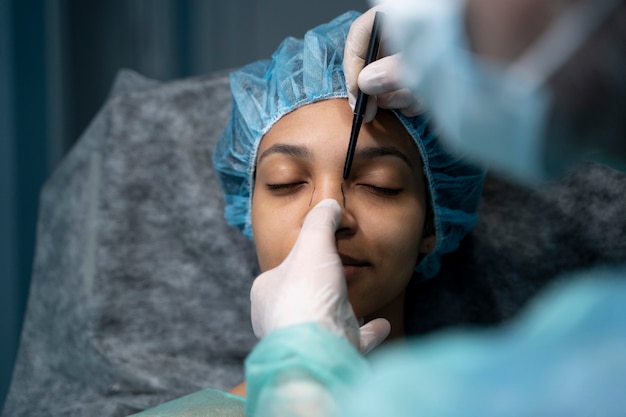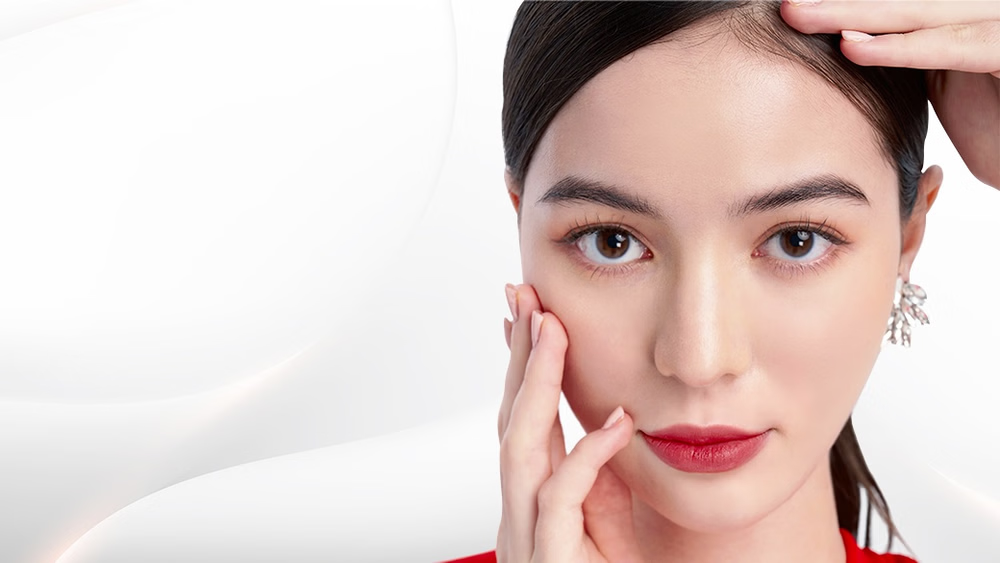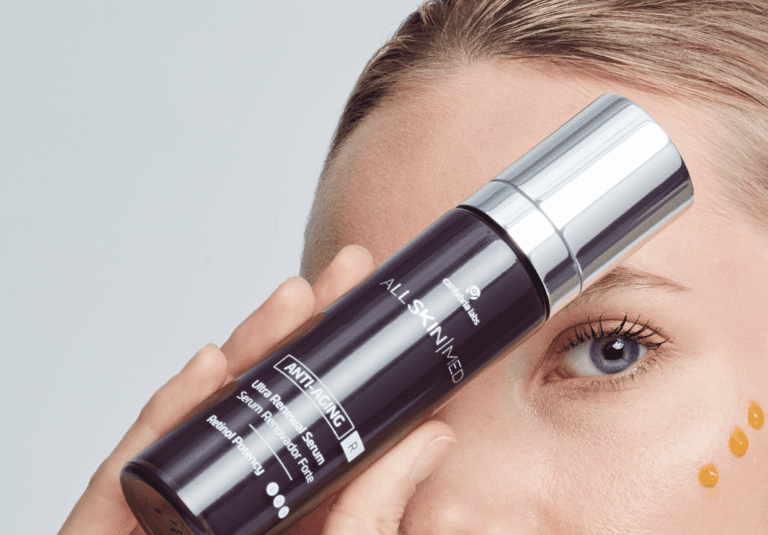Skin
Understanding the Letters on Some Skin Care Products: A Complete Guide

When browsing skincare aisles or scrolling through online stores, it’s easy to feel overwhelmed by the variety of products and ingredients on offer. Adding to the confusion are the numerous letters and acronyms found on skincare labels. What do all these letters mean? It turns out that these abbreviations aren’t just marketing jargon; they provide crucial information about a product’s ingredients, benefits, or formulation. By understanding them, you can better choose the products that suit your skin type and concerns. Understanding the Letters on Some Skin Care Products A Complete Guide.
Why Do Skin Care Products Use Letters and Acronyms?
Skincare brands often use letters and acronyms as shorthand for complex scientific names, making it easier for consumers to understand product functions. While many of these abbreviations are industry-wide, some are unique to particular brands.Further, These letters serve as quick references to active ingredients or specific product benefits. Learning what they stand for can empower you to make informed decisions about which products to buy.
Common Letters and Acronyms on Skin Care Products
Several acronyms frequently appear on skincare labels. Understanding what they mean can help you build a more effective skincare routine.
AHA (Alpha Hydroxy Acids)
AHAs, or Alpha Hydroxy Acids, are a group of water-soluble acids derived from sugary fruits. These acids exfoliate the surface of the skin, removing dead cells to reveal brighter and smoother skin beneath. AHAs are particularly beneficial for those with dry or sun-damaged skin, as they help improve texture and minimize fine lines. Lactic acid and glycolic acid are two commonly used AHAs in skincare formulations.
BHA (Beta Hydroxy Acid)
BHA stands for Beta Hydroxy Acid, which is most commonly associated with salicylic acid. BHAs are oil-soluble, making them highly effective for people with oily or acne-prone skin. Moreover, They penetrate deeply into the pores to clear out excess oil and prevent breakouts. Furthermore, Skincare products with BHAs are ideal for treating blackheads, pimples, and other acne-related issues.
SPF (Sun Protection Factor)
You’ve probably seen SPF numbers on sunscreens, but what do they really mean? SPF stands for Sun Protection Factor, and it refers to the product’s ability to protect your skin from harmful UVB rays. The higher the SPF number, the more protection you get from sunburn and skin damage. Additionally, It’s essential to choose a product with an appropriate SPF based on your skin type and daily sun exposure. However, no SPF provides 100% protection, so it’s crucial to reapply sunscreen regularly.
PA+++
Often seen alongside SPF, PA+++ represents the protection level from UVA rays, which are responsible for premature aging and pigmentation. The more plus signs after PA, the stronger the UVA protection. Products labeled PA+++ or PA++++ offer the best defense against long-term sun damage, making them an excellent choice for daily use.
pH Balance
The term “pH balance” appears on many skincare products, but what does it mean? pH measures how acidic or alkaline a substance is, on a scale from 0 to 14. Healthy skin has a slightly acidic pH level, typically between 4.5 and 5.5. When the skin’s pH balance is disrupted, it can lead to irritation, acne, or dryness. Many skincare products are formulated to be pH-balanced, meaning they won’t throw off your skin’s natural equilibrium.
Key Active Ingredients Indicated by Letters
In addition to well-known acronyms like SPF and AHA, you might encounter more specific terms represented by letters. These letters often refer to active ingredients designed to address particular skin concerns.
VIT C (Vitamin C)
Vitamin C is a powerful antioxidant, often listed as VIT C on product labels. It helps neutralize free radicals—unstable molecules that can damage skin cells—while also brightening the complexion and reducing signs of aging. Vitamin C products are known for their ability to fade dark spots and even out skin tone, making them a staple in anti-aging and brightening routines.
HA (Hyaluronic Acid)
HA, or Hyaluronic Acid, is a hydrating ingredient naturally found in the skin. It attracts and holds water, giving the skin a plump and moisturized appearance. HA is especially beneficial for those with dry or dehydrated skin, and it’s a common ingredient in moisturizers and serums.
Retinol (Vitamin A)
Retinol is a form of Vitamin A frequently used in anti-aging products. It works by accelerating cell turnover, which can help smooth fine lines, wrinkles, and uneven skin texture. Moreover, Many skincare brands abbreviate Retinol as “Vit A” or simply call it Retinol on their labels. If you’re dealing with age-related skin concerns or acne, products with Retinol may be ideal for you.
Niacinamide (Vitamin B3)
Niacinamide, or Vitamin B3, is a multi-functional ingredient that helps improve skin tone, reduce inflammation, and regulate oil production. It’s an excellent choice for those with acne-prone or oily skin. Niacinamide also strengthens the skin barrier, helping it retain moisture and resist environmental stressors.
Organic and Natural Skincare Certifications
Along with ingredient abbreviations, you might see letters related to certifications on natural and organic skincare products. These certifications are important because they tell you more about the product’s environmental impact and ingredient sourcing.
ECOCERT
ECOCERT is one of the most recognized organic certification bodies worldwide. Products with this label meet strict criteria for natural and organic ingredients. Moreover, Choosing an ECOCERT-certified product ensures you are using something that adheres to sustainable and environmentally friendly practices.
COSMOS
COSMOS stands for the COSMetic Organic Standard, a certification that guarantees a product meets high standards for organic ingredients. Products with this certification are formulated with a focus on purity, transparency, and environmental impact.
USDA Organic
In the United States, USDA Organic certification signifies that a product contains a minimum percentage of organic ingredients. Further, These products do not contain synthetic pesticides or harmful chemicals, making them a safer option for those seeking natural skincare solutions.
How to Use These Labels When Choosing Skincare Products
Deciphering skincare labels can seem complicated, but once you know what the letters and acronyms mean, it becomes much easier to select the right products. Understanding these terms can guide you in building a skincare routine tailored to your unique skin needs. Whether you’re fighting acne, addressing signs of aging, or seeking sun protection, knowing what’s inside your skincare products is key.
For example, if you have oily skin, a product with BHAs (like salicylic acid) can help reduce breakouts. On the other hand, if you’re concerned about aging, products with Retinol and Vitamin C will be more beneficial.
Conclusion
In the fast-evolving world of skincare, the letters and acronyms on product labels offer crucial insights into what each formula can do for your skin. From AHAs and BHAs that exfoliate and purify, to SPF and PA+++ that protect, understanding these abbreviations helps you make informed decisions.Additionally, The more familiar you become with the meaning behind these letters, the better equipped you’ll be to create a skincare routine that meets your individual needs and concerns. After all, glowing and healthy skin starts with knowledge—and knowing how to read the labels on your favorite products is a step in the right direction.
By using this newfound understanding of skincare acronyms, you can simplify your shopping experience, select the best products for your needs, and achieve the skin you’ve always desired.
Skin
How to Use Global Beauty Care Retinol Skin Cream
Skin
The Rarest Type of Nose: An Exploration of Distinction

The nose, a centerpiece of human physiognomy, stands as a hallmark of individual identity. While its primary functions—facilitating respiration and detecting aromas—are universal, the diversity in nasal forms is both staggering and fascinating. Some nose shapes dominate populations, while others are so rare they elicit wonder. But what, precisely, constitutes the rarest type of nose? Let us traverse the realms of anatomy, genetics, and cultural resonance to uncover the answer.
Anatomy and Variation: The Underpinnings of Nasal Uniqueness
Before delving into the extraordinary, it’s essential to comprehend the fundamental structure of the nose and the elements shaping its distinctiveness.
Structural Components of the Nose
- Nasal Bones: Form the upper bridge, lending foundational rigidity.
- Cartilage: Confers flexibility and shapes the tip and lateral contours.
- Nasal Septum: Divides nostrils, ensuring balanced airflow.
- Soft Tissue: Adds curvature and dynamic movement to the nose.
These elements, influenced by heredity, ethnicity, and environment, orchestrate a nose’s architecture.
Determinants of Nasal Morphology
- Genetic Blueprint: Nasal shape emerges from an intricate genetic interplay.
- Ethnic Adaptation: Ancestral climates mold nasal forms; slender noses prevail in frigid zones, while wider noses dominate humid locales.
- Age and Trauma: Time and injuries can subtly transform nasal aesthetics.
Recognizing Familiar Nose Types
Common nasal shapes abound across global demographics. Understanding these helps us appreciate the uniqueness of rarer forms.
- Roman Nose: Distinguished by a prominent, gently arched bridge; often depicted in classical sculpture, prevalent in European lineages.
- Button Nose: Petite and rounded with a slightly uplifted tip, often evoking youthful charm.
- Straight Nose: A linear bridge devoid of dips or curves, revered for its symmetry.
- Nubian Nose: A broad base coupled with an elongated bridge, celebrated within African diasporas for its striking allure.
- Hawk Nose: This shape exudes boldness, featuring a pronounced downward curve reminiscent of a raptor’s beak.

A rarity in Nasal Forms
Rare nasal configurations arise from genetic anomalies, evolutionary adaptations, or developmental peculiarities.
Noteworthy Rare Noses
- Fleshy Nose: Bulbous with pronounced soft tissue, less prevalent than streamlined shapes.
- Celestial Nose: Marked by a concave bridge and uplifted tip, its rarity lies in the pronounced upward tilt.
- Pinched Nose: A slim and tapered form, occasionally the result of surgical intervention or specific genetic traits.
The Pinnacle of Rarity: Uncommon Combinations
The rarest nose transcends individual traits, merging several uncommon attributes into one visage. For instance, a celestial nose paired with a profoundly sharp tip and exaggerated curvature is exceptionally unusual.
Genetic Conditions Yielding Unique Noses
- Binder Syndrome: Leads to an underdeveloped nasal bridge.
- Pierre Robin Sequence: Affects facial structure, creating recessed nasal features.
Cultural Perceptions of Rare Noses
Societal lenses magnify the significance of rare nose shapes, attributing symbolic and aesthetic value across epochs.
- In Media and Fashion: Unique noses captivate audiences, positioning their bearers as icons of individuality.
- Historic Standards: Ancient Egyptians prized slender noses for their perceived elegance, while Roman society lauded aquiline noses as emblems of authority.
- Contemporary Movements: Social media champions diversity, fostering an appreciation for distinctive features.
Genetics: The Architect of Nasal Rarity
Heredity and Evolution
- Inheritance Patterns: Unusual features often emerge from recessive traits passed discreetly through generations.
- Evolutionary Influence: Narrow noses, adapted for frigid air, and broad noses, efficient in humid climates, showcase humanity’s adaptability.
Surgical Crafting of Rare Noses
Modern rhinoplasty offers the possibility of replicating rare nasal forms, albeit with caution.
- Rhinoplasty Trends: Precision is paramount when emulating rare features.
- Balancing Risks: Overcorrection risks functional issues, underscoring the need for moderation.

Embracing Nasal Uniqueness
Whether common or extraordinary, the nose is a personal signature. Celebrating its individuality fosters self-acceptance and underscores humanity’s rich tapestry of diversity.
Conclusion
The rarest nose type defies singular definition, arising from a confluence of exceptional traits shaped by heredity, environment, and cultural perceptions. Its rarity enriches the spectrum of human beauty, reminding us that uniqueness is a virtue worthy of reverence.
FAQs
- What governs nasal shape?
Hereditary factors, cartilage structure, and environmental influences shape nasal appearance. - Can nasal shape evolve over time?
Yes, age and physical trauma can alter its form. - Are rare noses universally admired?
Attractiveness is subjective; rare noses often gain admiration for their distinctiveness. - Can surgery replicate rare shapes?
Yes, but achieving natural-looking results requires meticulous precision. - What’s the most prevalent nose type?
Button and Roman noses are among the most ubiquitous globally.
Skin
Eczema and Psoriasis on the Feet: Visuals, Root Causes,

Eczema and psoriasis stand among the most prevalent skin disorders affecting individuals across the globe. When these conditions manifest on the feet, they can cause significant discomfort and pose aesthetic dilemmas. This article delves into the origins, manifestations, and remedial options for eczema and psoriasis of the feet, supplemented by illustrative depictions.
Understanding Eczema: How It Manifests on the Feet
Defining Eczema and Its Underlying Triggers
Eczema, medically termed atopic dermatitis, is a chronic dermatological ailment characterized by inflammation, redness, and relentless itching. Common catalysts include allergic reactions, environmental irritants, and inherited predispositions.
Symptoms of Eczema on the Feet
- Parched, fissured skin.
- Reddened and swollen areas.
- Persistent itch, often intensifying nocturnally.
- Formation of vesicles in severe instances.
Visual Representations of Eczema on Feet
Individuals afflicted may observe inflamed, reddened patches or blistering. Imagery frequently aids in accurate visual diagnosis.
Psoriasis: A Chronic Autoimmune Condition with Distinctive Features
What Defines Psoriasis?
Psoriasis emerges as a chronic autoimmune disorder, spurring the overproduction of epidermal cells. This surplus accumulates, forming plaques frequently observed on the feet.
Manifestations of Psoriasis on the Feet
- It thickened, flaky skin.
- Reddish plaques are often veiled with silvery scales.
- Painful fissures or cracks in the skin.
- Nails may exhibit changes indicative of nail psoriasis.
Visual Evidence of Psoriasis on Feet
Typical depictions reveal heavily scaled skin with a silver-tinged overlay, highlighting the distinctiveness of this condition.

Differentiating Between Eczema and Psoriasis
Key Visual Contrasts
- Eczema: Features redness, oozing vesicles, and pronounced itchiness.
- Psoriasis: Exhibits dry, flaky plaques with silvery layers.
Diverging Etiologies
Eczema is often rooted in allergic hypersensitivity, whereas an autoimmune response drives psoriasis.
Treatment Modalities for Eczema and Psoriasis
Managing Eczema
- Moisturizing Agents: To counteract dryness.
- Topical Corticosteroids: For reducing inflammation.
- Allergen Avoidance: Identifying and steering clear of triggers.
- Natural Remedies: Coconut oil or colloidal oatmeal baths for soothing relief.
Treating Psoriasis
- Topical Applications: Corticosteroids or Vitamin D derivatives.
- Phototherapy: Exposure to UV light.
- Systemic Medications: Biologics or oral therapies for advanced cases.
- Home Solutions: Aloe vera or saline baths to ease symptoms.

Preventive Strategies for Eczema and Psoriasis on Feet
Skincare Routine
- Daily hydration with emollients.
- Use of gentle cleansers to avoid irritation.
Avoidance of Triggers
- Wearing breathable footwear.
- Mitigating stress, a known exacerbator of psoriasis.
Conclusion
Eczema and psoriasis affecting the feet can profoundly impact the quality of life. Through precise diagnosis, bolstered by visual indicators, and effective treatments, sufferers can find substantial relief. Consistent skin care and proactive avoidance of known triggers are indispensable in preventing recurrences.
FAQs
- How does foot eczema differ from fungal infections?
Eczema often presents as redness and dry skin, while white patches and a pungent odor typically mark fungal infections. - Can children develop eczema or psoriasis on their feet?
Yes, eczema is especially common among younger individuals. - What is the typical duration for treating foot psoriasis?
Treatment timelines vary based on severity, with chronic cases requiring long-term management. - Is it possible to have both eczema and psoriasis concurrently?
Although rare, it is feasible to experience both conditions simultaneously, necessitating distinct treatment plans. - Is there a definitive cure for psoriasis?
While psoriasis cannot be eradicated, its symptoms can be effectively managed through appropriate interventions.
-

 Skin9 months ago
Skin9 months agoNatural Oil-Free Face Moisturizer Reviews & Buyers Guide
-

 Hair3 weeks ago
Hair3 weeks agoDoes a Flat Iron Kill Lice? Fact or Myth?
-

 Hair9 months ago
Hair9 months agoDoes a Flat Iron Kill Lice? Fact or Myth?
-

 Skin8 months ago
Skin8 months agoAbout Face Beauty: Tips for Enhancing Your Natural Beauty
-

 Hair9 months ago
Hair9 months agoFunction of Beauty: Personalized Hair Care for Your Unique Needs
-

 Skin8 months ago
Skin8 months agoBeautiful Nails: Tips and Tricks for Healthy and Gorgeous Nails
-

 Hair9 months ago
Hair9 months agoTitanium Flat Iron vs. Ceramic
-

 DIY Cosmetics8 months ago
DIY Cosmetics8 months agoEmpire Beauty School:




